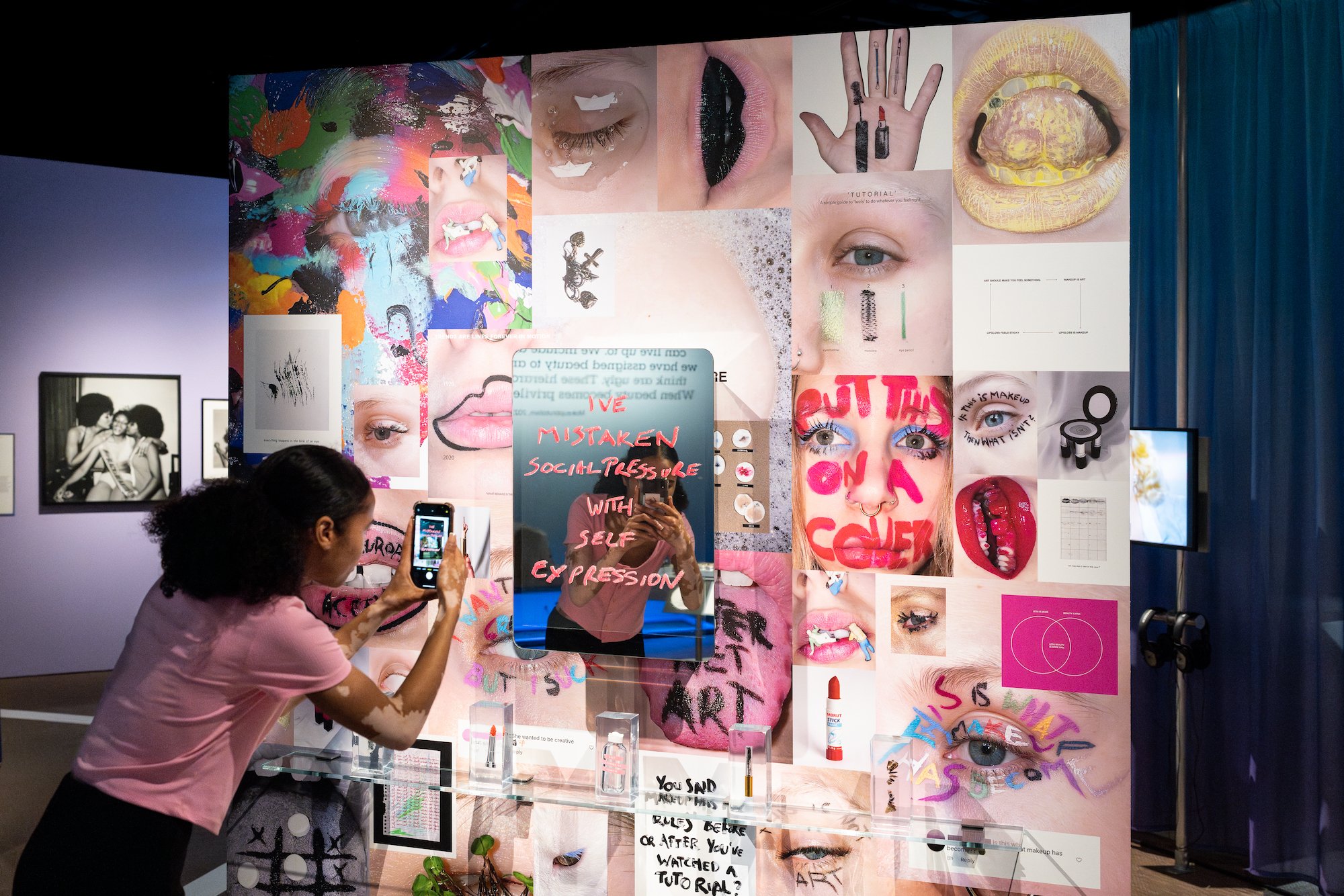Review: The Cult of Beauty, at Wellcome Collection
The enduring human fascination with beauty finds its roots in ancient civilisations, as evidenced by the opulent adornments discovered on meticulously preserved mummies in Egyptian sarcophagi. These figures, resplendent with golden jewellery, intricate headscarves, and elaborate masks, bear witness to a deep-seated connection between life and the quest for aesthetic enhancement. This entwined relationship between existence and beauty, along with the pursuit of an idealised perfection, is meticulously examined in the exhibition The Cult of Beauty at Wellcome Collection. Spanning from antiquity to the contemporary digital era, this exhibition not only showcases The Cult of Beauty, but also provokes introspection regarding our own perceptions of beauty and identity, particularly within marginalised communities.
‘Ideal beauty retains its allure precisely because it remains unattainable’.
Curated by Janice Li, this exhibition traverses sweeping themes that delve into underlying influences and the evolutionary trajectory of beauty, encompassing faith, ideals, industrialisation, gender dynamics, scientific inquiry, technological advancements, and individual autonomy. When viewed within their contextual framework, the objects collectively assert a profound statement: ‘Ideal beauty retains its allure precisely because it remains unattainable’.
As visitors navigate through this thoughtfully calibrated exhibition, the very concept of beauty emerges as a construct, subject to continuous evolution, and indelibly shaped by prevailing cultural currents—from the invention of the rudimentary mirror to the contemporary fixation with the ubiquitous selfie.
Prominent examples of beauty span early manifestations, such as the ‘Wax vanitas depicting life and death, modelled on Queen Elizabeth I’, to the paradoxical ‘mouches’, worn in the 18th century by individuals seeking to conceal smallpox or syphilis scars. Intriguingly, these patches evolved into a fashionable accessory, particularly among sex workers, enhancing complexion and radiance.
The exhibition imparts a fundamental lesson: beauty constitutes an inherently personal affair.
The exhibition also delves into the realm of body modification, exemplified by the transformative work of Dr Pitanguy in Brazil, dubbed ‘The Pope of Plastic Surgery’. His contributions underscore the profound impact of the beauty industry on personal transformation, as evidenced by a mere fraction of the vast body of his work.
The Cult of Beauty emerges as a pertinent nexus between historical context and contemporary perspectives on beauty, particularly in an era that is arguably characterised by far greater vanity and visibility than ever before. The industry's prominence is underscored by its substantial economic significance, rendering it a complex terrain. Consequently, this abundance of options can engender dysmorphic tendencies, exacerbating the emphasis on cosmetic interventions over individual well-being.
The exhibition imparts a fundamental lesson: beauty constitutes an inherently personal affair, profoundly influenced by historical, cultural, diasporic, and circumstantial factors. Whether one chooses to embellish, enhance, or alter the physical form, beauty remains a mutable construct, and we all partake in a collective Cult that evolves with the passage of time.
I am giving this exhibition a Weekly Muse Golden Star. Go and see it. Now.
For more information and bookings, please visit the Wellcome Collection’s website



